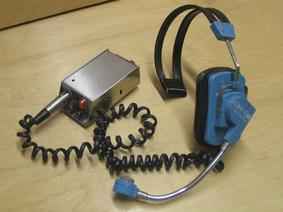doggmann
Member
Hi all!
So, I dug out an old hard-wired ClearCom base station (CS-222) and a couple belt packs (501s). All seems functional, but we don't have any headsets, ClearCom 4-pin F XLR. However, we've got quite a few other headsets that I'm attempting to convert to the 4-pin XLR.
I found a pinout from another post for ClearCom, and I'm able to trace the speaker hots and grounds, mic hots and grounds...and I've had a little success, except in the mics.
If I feed a program input into the base station, I can hear it in the base station headset as well as the beltpack headset, so I got the speakers in the headsets working it seems. I can hear clicking when I hit the call buttons on both the base station and belt pack, but I can't get anything out of the mics on the headsets.
The most surprising incident was when I made contact with the mic hot solder point, and the belt pack call button was locked, I suddenly was picking up radio stations on both headsets. I think I was acting as an antenna and feeding that into the mic hot.
Any hints? Is there a ground or phantom power fed from the base station or something else that I'm missing that I can't get anything from the mics on the headsets?
Thanks!
So, I dug out an old hard-wired ClearCom base station (CS-222) and a couple belt packs (501s). All seems functional, but we don't have any headsets, ClearCom 4-pin F XLR. However, we've got quite a few other headsets that I'm attempting to convert to the 4-pin XLR.
I found a pinout from another post for ClearCom, and I'm able to trace the speaker hots and grounds, mic hots and grounds...and I've had a little success, except in the mics.
If I feed a program input into the base station, I can hear it in the base station headset as well as the beltpack headset, so I got the speakers in the headsets working it seems. I can hear clicking when I hit the call buttons on both the base station and belt pack, but I can't get anything out of the mics on the headsets.
The most surprising incident was when I made contact with the mic hot solder point, and the belt pack call button was locked, I suddenly was picking up radio stations on both headsets. I think I was acting as an antenna and feeding that into the mic hot.
Any hints? Is there a ground or phantom power fed from the base station or something else that I'm missing that I can't get anything from the mics on the headsets?
Thanks!



